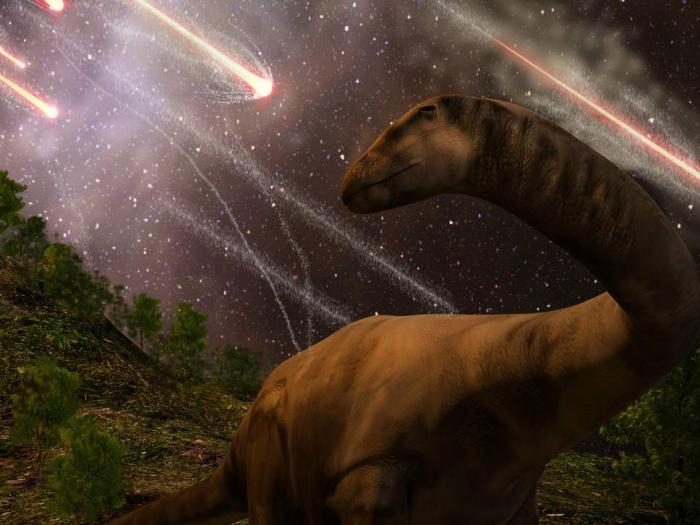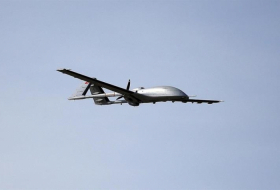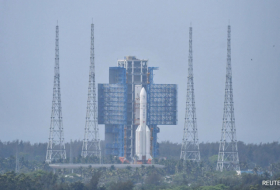Collisions have increased by up to three times over the past 290 million years, the research led by a team at the University of Toronto, suggests.
This surge in asteroid hits meant the extinction of the dinosaurs became “inevitable”, they suggest in their findings, published in the journal Science.
It was previously thought there were so few records of asteroid craters older than 300 million years because over time they would have been lost to erosion.
But using a Nasa craft in orbit around the Moon, the scientists have been able to estimate the age of craters for the first time.
“The relative rarity of large craters on Earth older than 290 million years and younger than 650 million years is not because we lost the craters, but because the impact rate during that time was lower than it is now,” said Rebecca Ghent, an associate professor at the University of Toronto and one of the paper’s co-authors.
Thermal data and images collected by Nasa’s Lunar Reconnaissance Orbiter (LRO), which has been circling the Moon since 2009, has allowed scientists to determine the size of soil and rocks surrounding a crater. During the lunar night, bigger rocks radiate more heat than finer lunar soil.
In conjunction with data on how long it takes for Moon rock to break down into soil, it was revealed the size and number of large rocks near a crater give an indication of that crater’s age.
Younger craters tend to be covered with more boulders and rocks than older craters. This breakdown is caused over hundreds of millions of years by the “constant rain of tiny meteorites”, the research team said.
“The LRO’s instruments have allowed scientists to peer back in time at the forces that shaped the Moon,” said Noah Petro, an LRO project scientist based at Nasa Goddard Space Flight Centre in Maryland.
The findings on the Moon were supported by geological studies on Earth. The team in Toronto worked with the University of Southampton’s Thomas Gernon, who studies a terrestrial feature called kimberlite pipes.
These “pipes”, formed over the last 650 millions years, are the subterranean remnants of long extinct volcanoes, which stretch down in a carrot shape “a couple of kilometres” below the surface. The hardness of the rock means they remain some of the least eroded areas on our planet.
Dr Gernon found the crater records in these areas correlate closely with those of the Moon.
The research suggests crater formation over the last 290 million years has been as much as three times higher than in the previous 700 million years.
“It was a painstaking task, at first, to look through all of these data and map the craters out without knowing whether we would get anywhere or not,” said Sara Mazrouei, lead author of the paper who analysed all the data for the project at the University of Toronto.
But she said the study now “provides evidence for a dramatic change in the rate of asteroid impacts on both Earth and the Moon that occurred around the end of the Paleozoic era.”
It is not known why there was this rapid escalation in the number of asteroid strikes on the Earth and the Moon, but the team have suggested it could be related to huge collisions taking place in the main asteroid belt between the orbits of Mars and Jupiter. Such events can create debris that can reach the inner solar system.
Dinosaurs proliferated about 250 million years ago, and “as a species were particularly vulnerable to large impacts from the get-go, more so than earlier animal groups”, said Dr Gernon.
“It’s perhaps fair to say it was a date with destiny for the dinosaurs – their downfall was somewhat inevitable given the surge of large space rocks colliding with Earth,” he added.
The Independent
More about: asteroids
















































